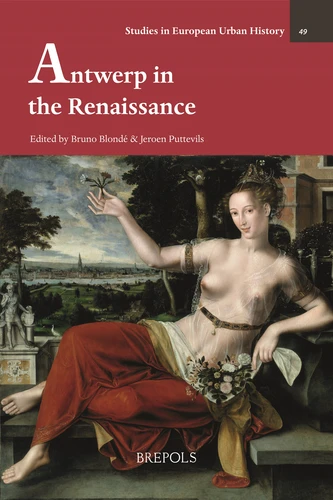Antwerp in the Renaissance. Éclairages sur un objet fugace et une réforme de Pépin, dit « le Bref »
Par : ,Formats :
- Paiement en ligne :
- Livraison à domicile ou en point Mondial Relay indisponible
- Retrait Click and Collect en magasin gratuit
- Réservation en ligne avec paiement en magasin :
- Indisponible pour réserver et payer en magasin
- Nombre de pages315
- PrésentationRelié
- Poids1.03 kg
- Dimensions17,8 cm × 25,4 cm × 0,0 cm
- ISBN978-2-503-58833-9
- EAN9782503588339
- Date de parution27/10/2020
- CollectionStudies in European Urban Hist
- ÉditeurBrepols
Résumé
This book engages with Antwerp in the Renaissance. Bringing together several specialists of sixteenth-century Antwerp, it offers new research results and fresh perspectives on the economic, cultural and social history of the metropolis in the sixteenth century. Recurrent themes are the creative ways in which the Italian renaissance was translated in the Antwerp context. Imperfect imitation often resulted from the specific social context in which the renaissance was translated : Antwerp was a metropolis marked by a strong commercial ideology, a high level affluence and social inequality, but also by the presence of large and strong middling layers, which contributed to the city's ‘bourgeois' character.
The growth of the Antwerp market was remarkable : in no time the city gained metropolitan status. This book does a good job in showing how quite a few of the Antwerp ‘achievements' did result from the absence of ‘existing structures' and ‘examples'. Moreover, the city and its culture were given shape by the many frictions, and uncertainties that came along with rapid urban growth and religious turmoil.
The growth of the Antwerp market was remarkable : in no time the city gained metropolitan status. This book does a good job in showing how quite a few of the Antwerp ‘achievements' did result from the absence of ‘existing structures' and ‘examples'. Moreover, the city and its culture were given shape by the many frictions, and uncertainties that came along with rapid urban growth and religious turmoil.
This book engages with Antwerp in the Renaissance. Bringing together several specialists of sixteenth-century Antwerp, it offers new research results and fresh perspectives on the economic, cultural and social history of the metropolis in the sixteenth century. Recurrent themes are the creative ways in which the Italian renaissance was translated in the Antwerp context. Imperfect imitation often resulted from the specific social context in which the renaissance was translated : Antwerp was a metropolis marked by a strong commercial ideology, a high level affluence and social inequality, but also by the presence of large and strong middling layers, which contributed to the city's ‘bourgeois' character.
The growth of the Antwerp market was remarkable : in no time the city gained metropolitan status. This book does a good job in showing how quite a few of the Antwerp ‘achievements' did result from the absence of ‘existing structures' and ‘examples'. Moreover, the city and its culture were given shape by the many frictions, and uncertainties that came along with rapid urban growth and religious turmoil.
The growth of the Antwerp market was remarkable : in no time the city gained metropolitan status. This book does a good job in showing how quite a few of the Antwerp ‘achievements' did result from the absence of ‘existing structures' and ‘examples'. Moreover, the city and its culture were given shape by the many frictions, and uncertainties that came along with rapid urban growth and religious turmoil.




